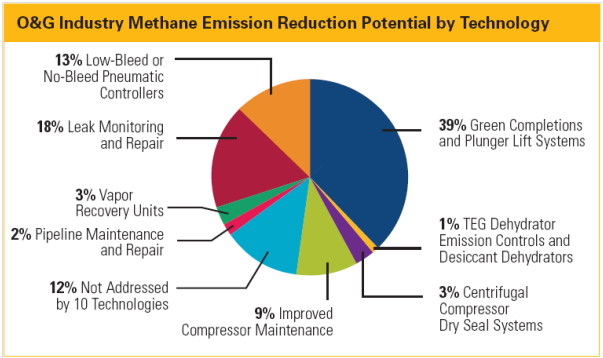China is rapidly expanding production and use of cleaner burning natural gas in an attempt to wean itself off heavily polluting coal for electricity and heating. In the next five years, it plans to increase the share of natural gas from the current 4 percent of its total energy mix to 8 percent, more than doubling consumption from 110 billion cubic meters (bcm) in 2010 to 260 bcm in 2015. Much of this new natural gas is expected to be unconventional shale gas: in the recent five-year plan for shale gas development, the Chinese government has set a target of developing 6.5 bcm of shale gas per year by 2015, ramping up to 60-100 bcm by 2020. (To put this into perspective, all of China's natural gas production totaled 101 bcm in 2011.)
In the U.S., where shale gas production has become a major new source of natural gas in the last decade, reaching 140 bcm in 2010 (23% of all natural gas production), companies and regulators have developed best practices and technologies to streamline development, cut costs and protect the environment. These range from smart water-saving and reuse technologies to low-impact land reclamation. The Natural Resources Defense Council (NRDC) recently released a report, "Leaking Profits" (read the factsheet here) analyzing the top 10 opportunities to capture unintended and unnecessary methane emissions from oil and gas production, including shale gas, which if implemented could reduce methane emissions by more than 80% and generate $2 billion in additional revenue for the industry each year. These technologies have huge implications for the future of shale gas development in the U.S. and elsewhere.
Methane makes up as much as 90 percent of natural gas, and is 25 to 100 times more potent a greenhouse gas than carbon dioxide. Because methane is a short-lived GHG, reducing methane emissions has immediate benefits to the climate and people's health, making it a major focus of a new UNEP partnership on "short-lived climate forcers". Currently, U.S. natural gas and oil production releases 12 million tons of methane annually (equivalent to at least 300 million tons of CO2). If 80 percent of this were captured, it would be equivalent to taking 40 million passenger vehicles off the road.
NRDC's new report lays out ten profitable methane control technologies (see chart below), most of which pay themselves back after one year or less. For example, using temporary processing equipment during hydraulic fracturing can recover waste gas, leading to a so-called "green completion". Monitoring and repairing leaks throughout the facility can cut down fugitive emissions and increase yield. And using low-bleed or no-bleed pneumatic controllers can also reduce emissions. (Read about all ten technologies in the factsheet and from one of the report's authors.)
 Implementing all these technologies in the U.S. could save 10 million metric tons of methane (equivalent to at least 300 million tons of carbon dioxide) and generate $2 billion in additional revenue.
Implementing all these technologies in the U.S. could save 10 million metric tons of methane (equivalent to at least 300 million tons of carbon dioxide) and generate $2 billion in additional revenue.
As China enters a new era of domestic natural gas production, including shale gas, there are many lessons to be learned from the U.S. experience. By adopting these ten technologies in the future and making them mandatory, China can significantly reduce its global warming and air pollution emissions, save its industries money, and improve its energy security.
(This post was co-authored with NRDC's Michael Davidson.)


